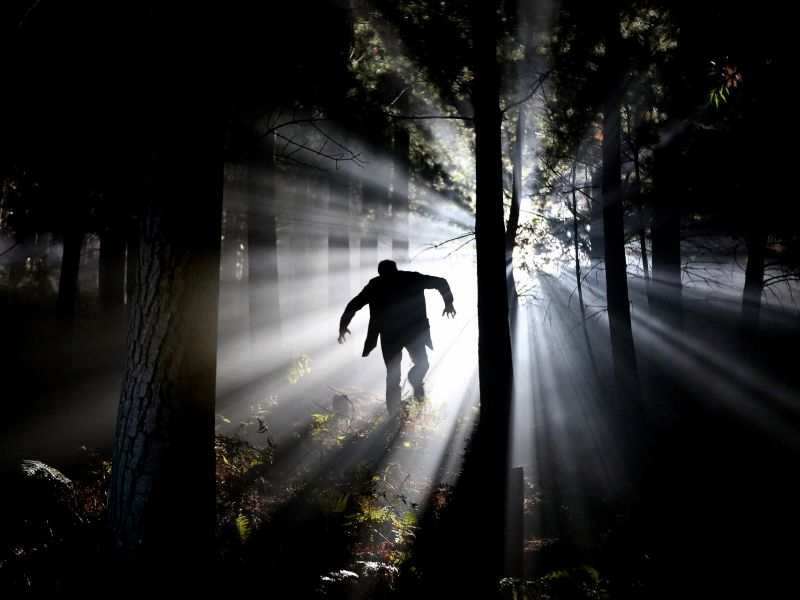[dt_button link=”http://d165vjqq8ey7jy.cloudfront.net/mp3/32975/se-7952s.mp3″ target_blank=”true” button_alignment=”default” animation=”fadeIn” size=”small” style=”default” bg_color_style=”custom” bg_color=”#333333″ bg_hover_color_style=”custom” bg_hover_color=”#444444″ text_color_style=”custom” text_color=”#ffffff” text_hover_color_style=”custom” text_hover_color=”#dddddd” icon=”fa fa-cloud-download” icon_align=”left”]Yuklash[/dt_button]
[dt_divider style=”thin” /]
Transcript:
Voice 1
Welcome to Spotlight. I’m Liz Waid. Spotlight uses a special English method of broadcasting. It is easier for people to understand, no matter where in the world they live.
Do you like to be afraid? Many people around the world enjoy feeling fear. They love telling and listening to frightening stories. Many cultures tell different kinds of scary stories. Some involve creatures beyond what we can see and feel. Others are about dangerous monsters, like evil spirits. Today’s Spotlight is on scary stories and why people tell them.
The feeling of fear is a strong one. Being frightened creates extreme feelings in the body. When a person is scared, her heart beats faster. Her senses like touch and hearing might become stronger for a short amount of time. Some people tell scary stories to experience these extreme feelings.
But telling scary stories can also have a more complex purpose. Scary stories are often fantasy – they are not real. They only happen in a person’s imagination. Telling frightening stories is safe. But it lets people think about what they fear in real life.
For example, scary stories can be about frightening places. These places are real, but there are stories about them. One of these places is in Mexico. In English it is called “The Island of the Dolls.” Dolls are toys shaped like human children. Sometimes they can make a person feel strange and afraid. On this island, there are thousands of dolls. They hang from trees everywhere. They are missing body parts and they are dirty. Adam Navis tells the story of the Island of the Dolls.
Voice 2
“Don Julian Santana Barrera lived alone on a small island. One day something horrible happened. Don Julian found a little girl floating in the water. The little girl had drowned! A little while later he saw her doll floating down the river.
Don Julian felt very bad about the little girl. So he hung her doll from a tree, to remember her. He believed the girl became a ghost, and visited Don Julian. He believed he heard strange whispers and sad sounds in the darkness. The girl’s ghost wanted him to find more dolls. So Don Julian continued to hang more and more dolls from the trees.
When he died, his nephew found Don Julian’s body in the river. It was the same place where he had found the girl. Today, there are still dolls everywhere on the island.
Voice 1
This story may make a person feel strange and afraid. It just seems wrong. But scary stories can also have a particular purpose. They can teach a lesson. Fear can influence behaviour. This is the case in a story from Japan. Bruce Gulland tells the story of the Jikininki.
Voice 3
It is late at night in a small village in Japan. A man named Muso is sleeping. He has travelled all day. Finally, he has found a room to stay for the night. But in the middle of the night, a boy wakes Muso. “We need to leave,” he says. “Why?” Muso asks sleepily. The boy answers: “There has been a death.” The boy is shaking with fear. He continues: “You are a stranger here, and do not know. Frightening things happen in this village after a death. So we must leave.
But Muso does not leave. He is a priest. It is his duty to say prayers over the dead. Later that night, Muso sees a spirit. As Muso watches, the spirit does something very horrible. It eats the dead body. Muso watches, too frightened to move. He has seen a Jikininki – a kind of evil spirit.
Later in the story, Muso finds the Jikininki. He discovers it is the spirit of a greedy priest. The priest stole money from dead bodies when he was alive. As punishment for his evil acts, he became a Jikininki. At the end of the story Muso frees him. But the greedy priest suffered as a Jikininki for 100 years.”
Voice 1
The story of the Jikininki teaches a simple lesson about greed. But some writers also like to tell scary stories about more complex ideas. A very famous example is by an English writer named Mary Shelley. There are no spirits, or magic in this story. It is about a normal person – a scientist. Christy VanArragon tells the story of Frankenstein:
Voice 4
“Victor Frankenstein was a very intelligent scientist. But he wanted to do impossible things. In his experiments he learned how to give life to non-living things. Using this knowledge, he created a creature from old, dead, body parts. And then he gave it life! The creature was intelligent. It could speak, read and write. But the creature was also very ugly. So Victor told it to leave.
The creature only wanted a friend. But everywhere it went, people were frightened of it. They thought the creature was evil. It began to hate Victor Frankenstein for giving it life. So it hurt Victor. It even killed his wife. At the end of the book, Victor dies. The creature cries over Victor’s body. Victor only wanted to bring good things to the world. But by creating the creature, he destroyed both it and himself. The creature runs away and is lost forever.”
Voice 1
The story of Frankenstein is not as frightening as other scary stories. Instead, it questions the things people fear. The creature looks very frightening. So people believe it is evil. But it does not want to be a monster.
So, why do scary stories continue to be popular around the world? Neil Gaimon is a British writer of scary stories. In a 2014 TED talk he explained another reason why he thinks scary stories can be good for people. He said:
Voice 5
“Fear is a wonderful thing in small amounts. You begin the scary story knowing you will come out after a time in safety. It is always good to know that you are still here, still safe. You know that nothing strange has happened, not really. It is good to be a child again, for a little while. It is good not to fear real scary things like governments or relationship or money problems or distant wars. But instead we can fear things that do not exist.”





Interesting